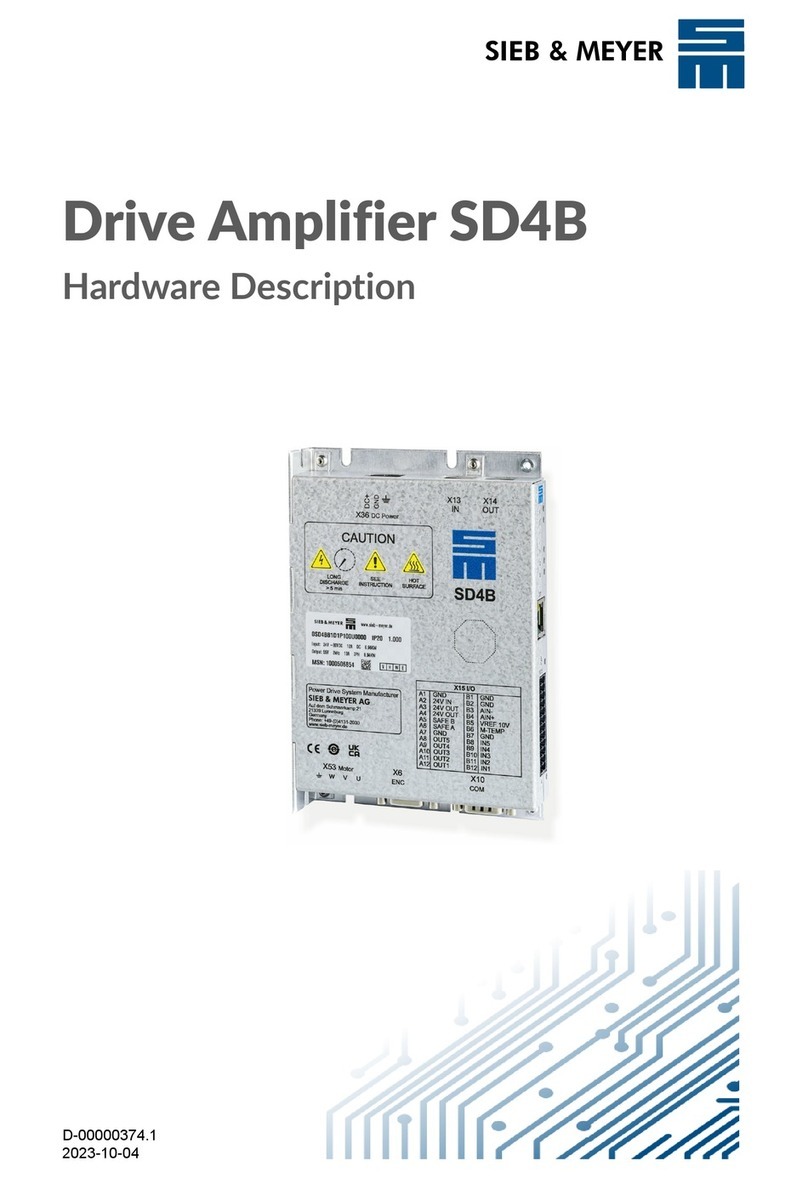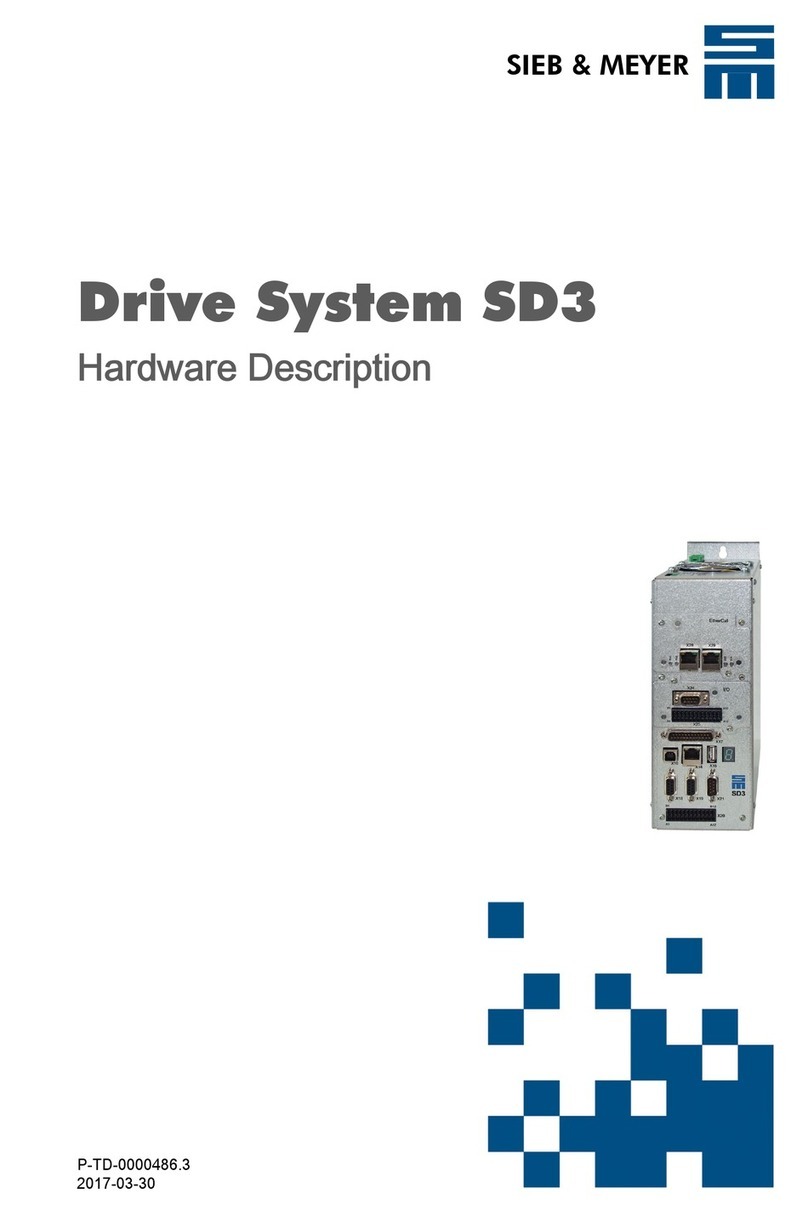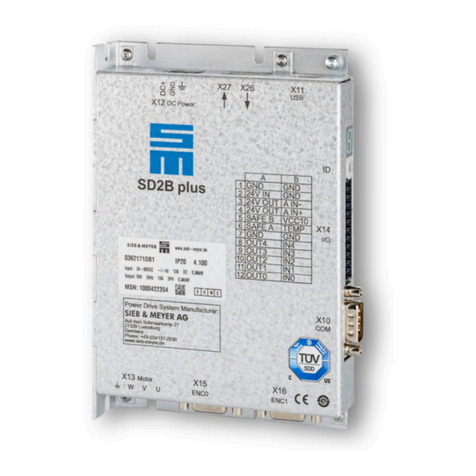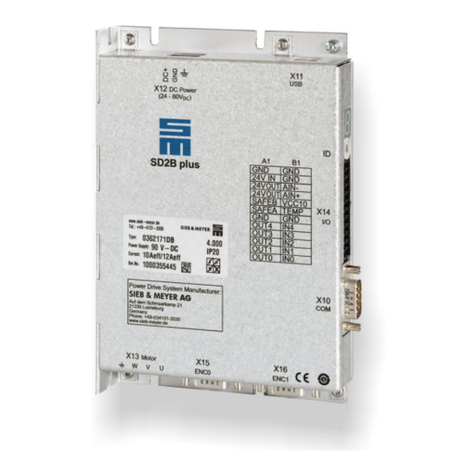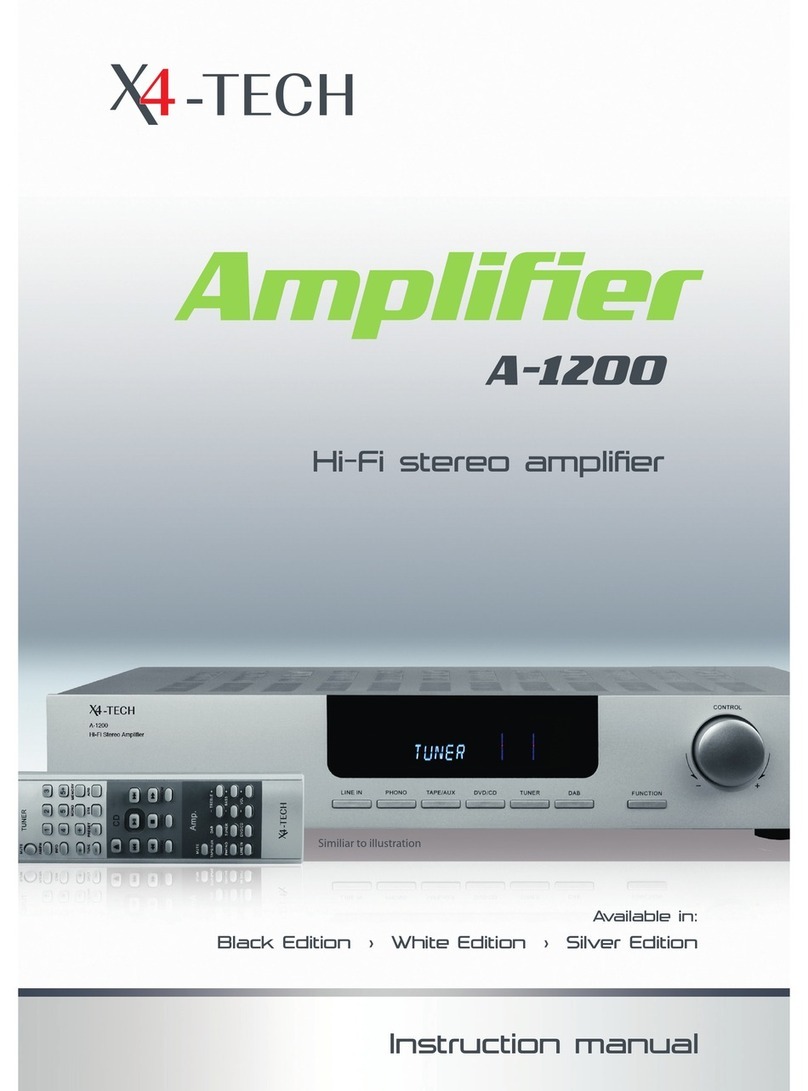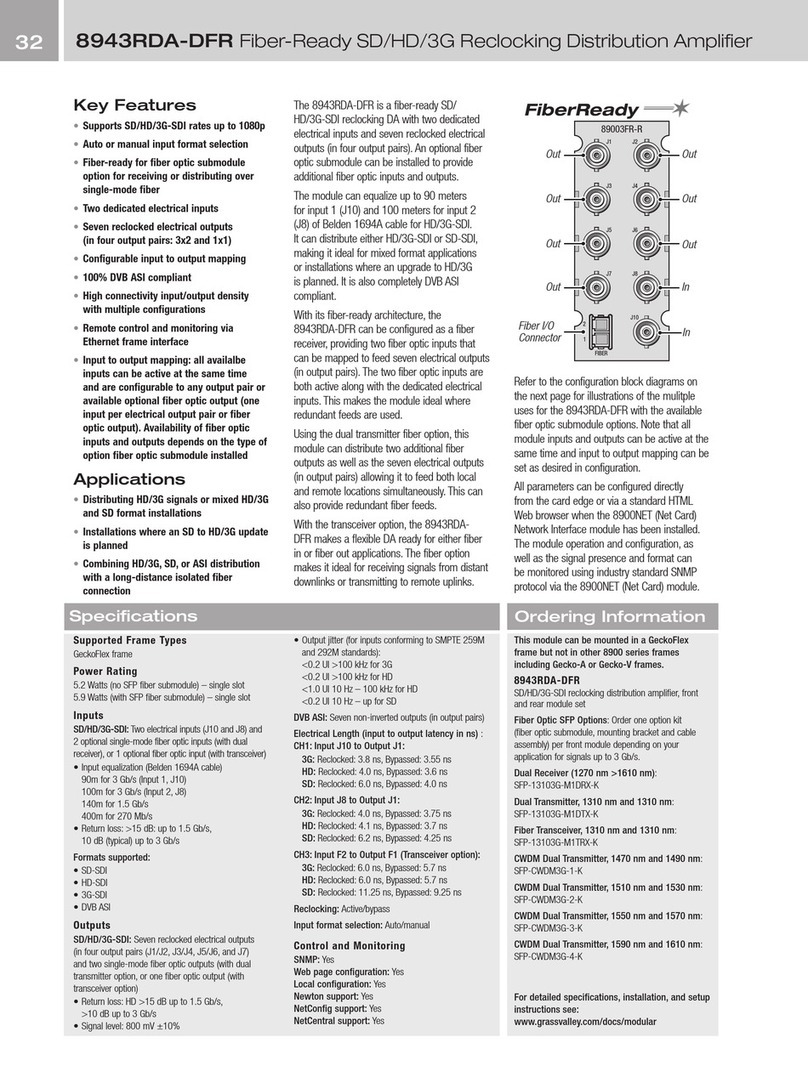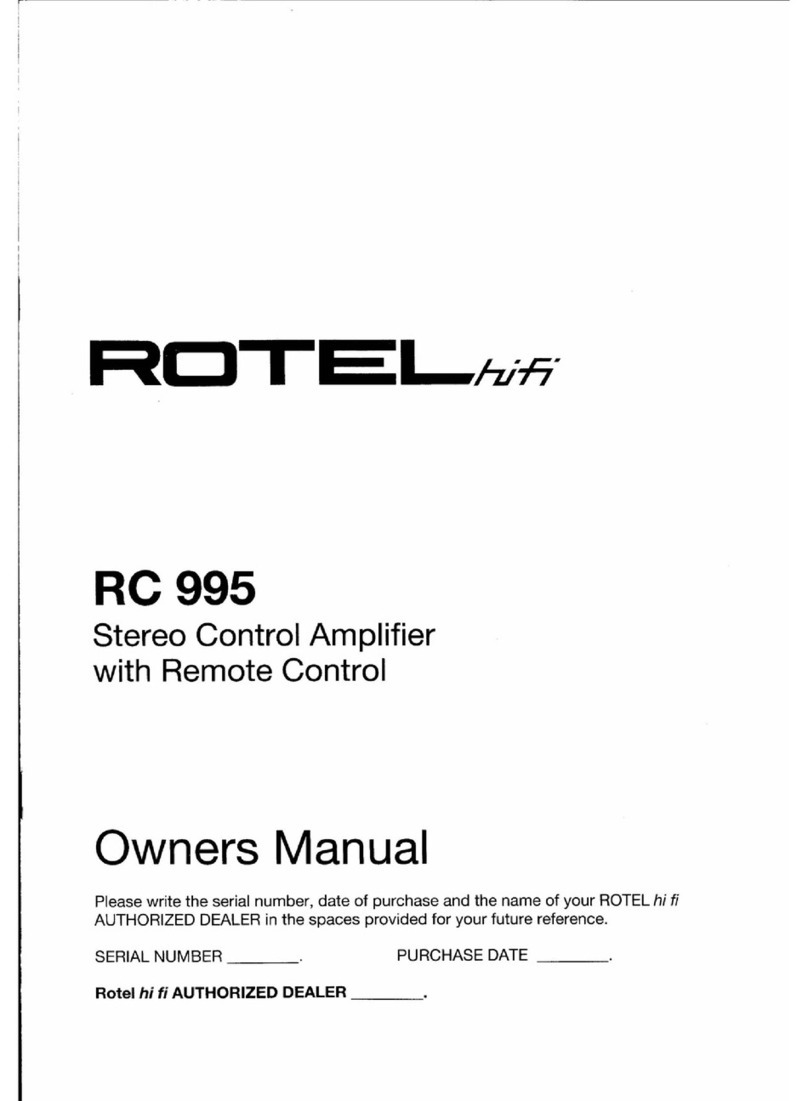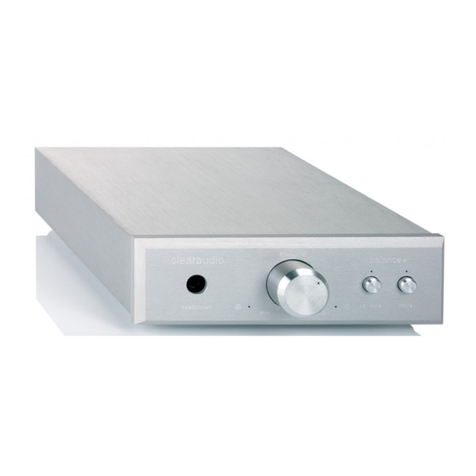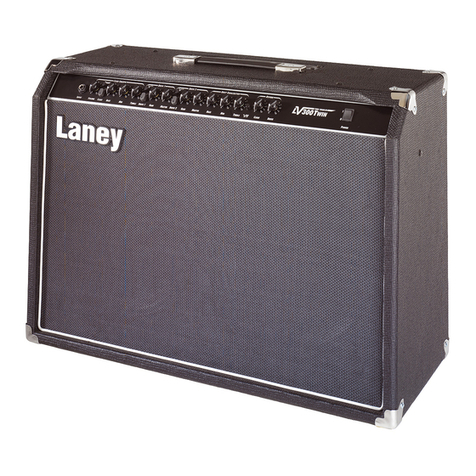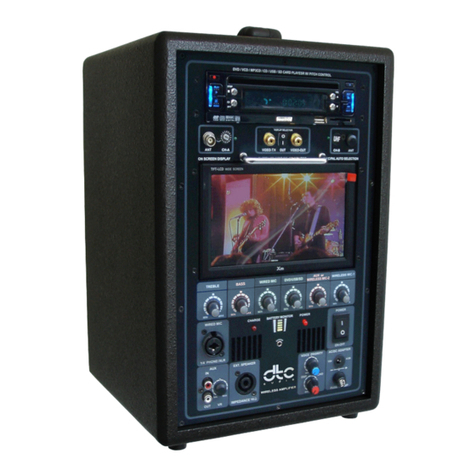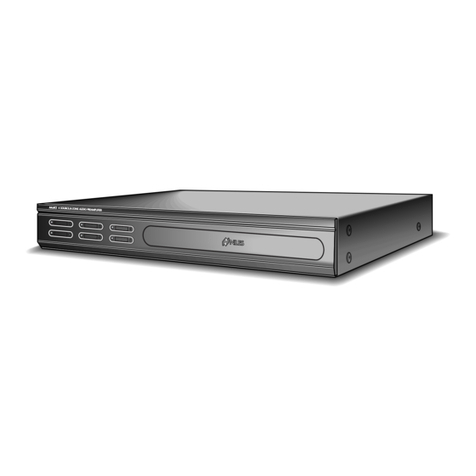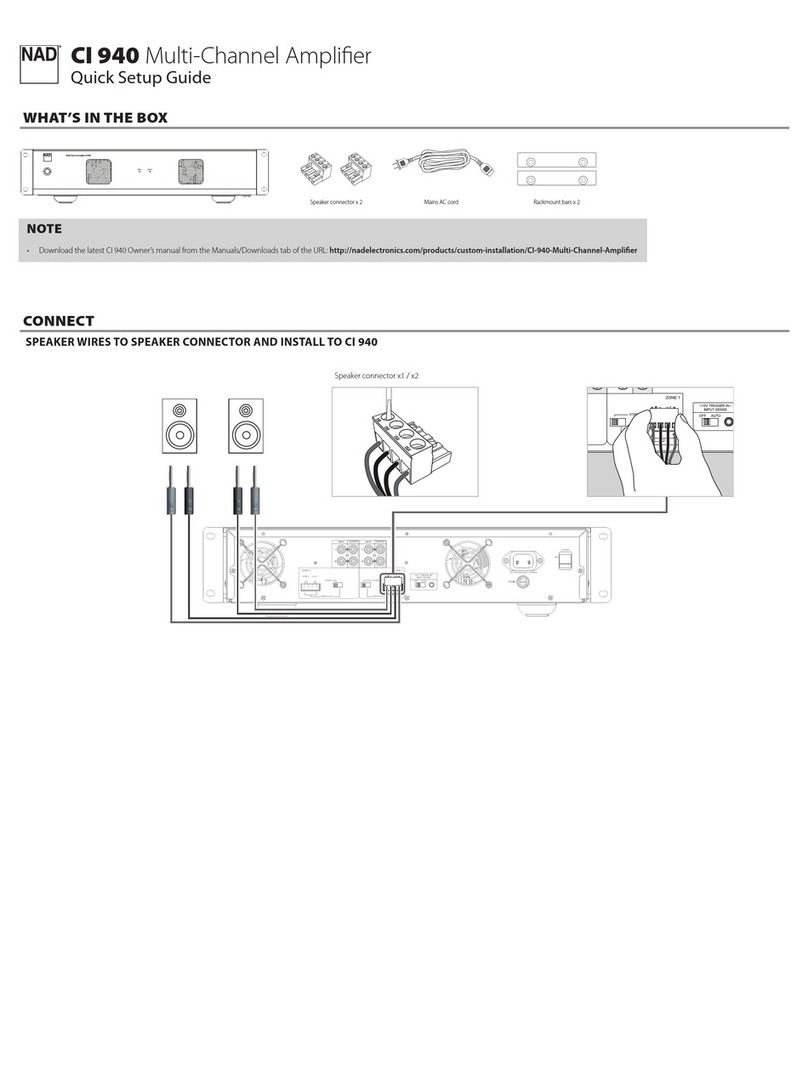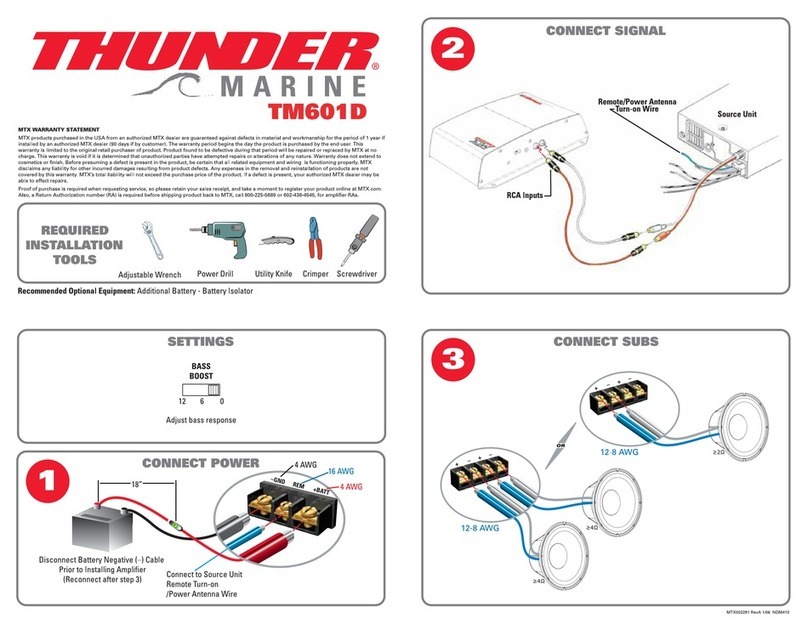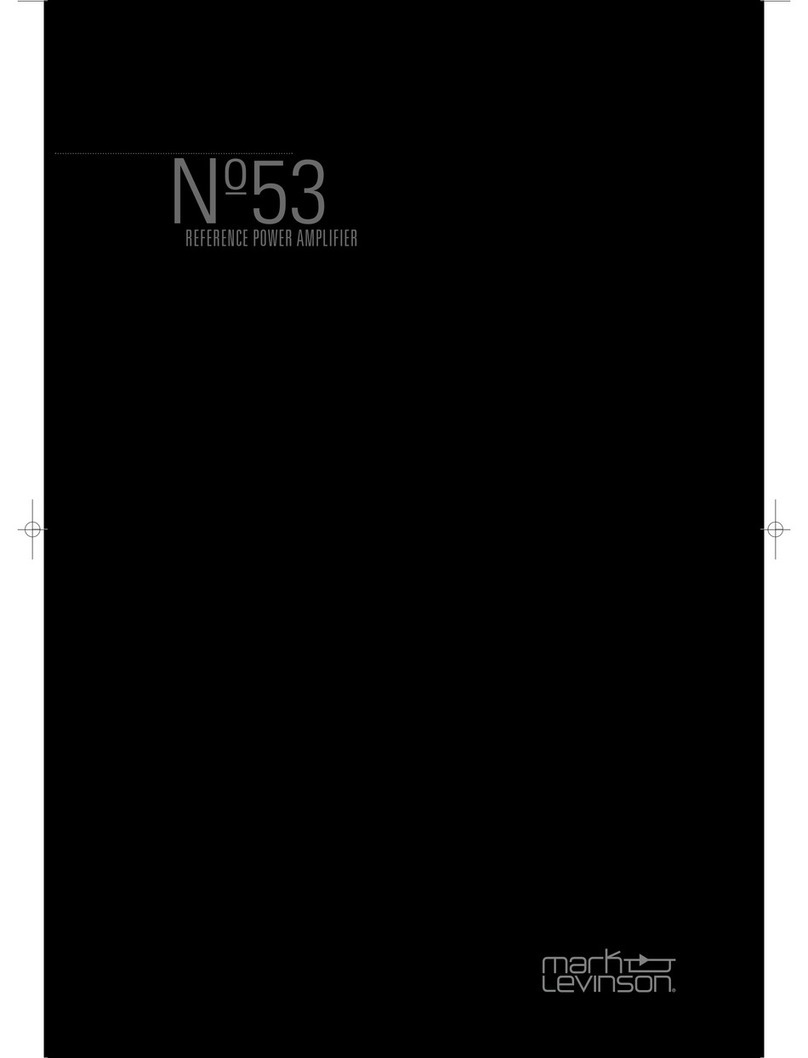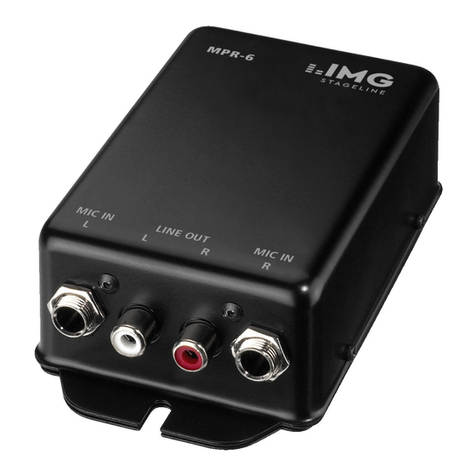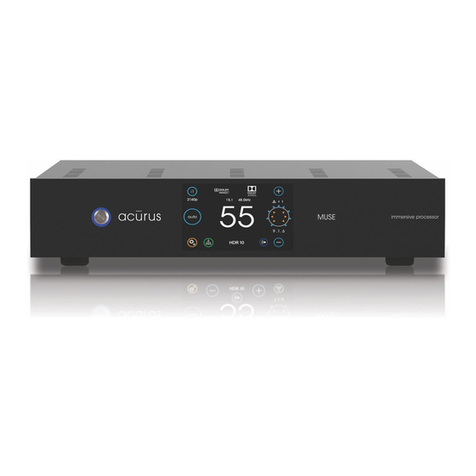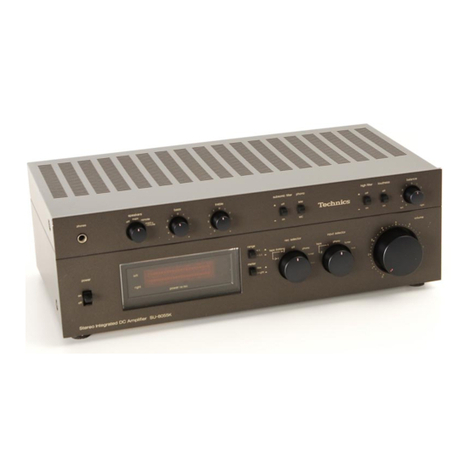SIEB & MEYER SD2 User manual

Drive System SD2
Safety Functions SFM / SLOF
P-TD-0000426.12
2019-08-28
SIEB & MEYER W

Copyright
Translation of the original instructions, Copyright © 2019 SIEB & MEYER AG
All rights reserved.
This manual or extracts thereof may only be copied with the explicit authorization of
SIEB & MEYER AG.
Trademarks
All product, font and company names mentioned in this manual may be trademarks or registered
trademarks of their respective companies.
SIEB & MEYER worldwide
For questions regarding our products and technical problems please contact us.
SIEB & MEYER AG
Auf dem Schmaarkamp 21
21339 Lueneburg
Germany
Phone: +49 4131 203 0
Fax: +49 4131 203 2000
http://www.sieb-meyer.com
SIEB & MEYER Shenzhen Trading Co. Ltd.
Room A208, 2/F,
Internet Innovation and Creation services base
Building (2),
No.126, Wanxia road, Shekou, Nanshan district,
Shenzhen City, 518067
China
Phone: +86 755 2681 1417 / +86 755 2681 2487
Fax: +86 755 2681 2967
http://www.sieb-meyer.cn
SIEB & MEYER Asia Co. Ltd.
4 Fl, No. 532, Sec. 1
Min-Sheng N. Road
Kwei-Shan Hsiang
333 Tao-Yuan Hsien
Taiwan
Phone: +886 3 311 5560
Fax: +886 3 322 1224
http://www.sieb-meyer.com
W
2 Drive System SD2 - Safety Functions SFM / SLOF

About this Manual 1
General Information 2
Safe Frequency Monitor (SFM) 3
Safe Limited Output Frequency (SLOF) 4
Parameterization of the Limit Frequency 5
Fieldbus Communication 6
safety object converter
7
OSSD Signals 8
Connector Pin Assignment 9
Error Messages 10
WChapter Overview
Drive System SD2 - Safety Functions SFM / SLOF 3

Chapter Overview W
4 Drive System SD2 - Safety Functions SFM / SLOF

1 About this Manual ............................................................. 7
1.1 Illustration of Warnings ............................................................................... 7
1.2 Illustration of General Notices ..................................................................... 8
2 General Information .......................................................... 9
3 Safe Frequency Monitor (SFM) ....................................... 11
3.1 Functional Description .............................................................................. 11
3.2 Application ................................................................................................ 13
3.3 Parameters of the Safety Function SFM ................................................... 14
3.4 Transmission of the Status Message ........................................................ 14
3.4.1 Status Message via OSSD Signal ......................................................................... 14
3.4.2 Status Message via Fieldbus ................................................................................ 15
4 Safe Limited Output Frequency (SLOF) .......................... 17
4.1 Functional Description .............................................................................. 18
4.1.1 Time Point of Function Activation (SLOF) ............................................................. 18
4.2 Application ................................................................................................ 19
4.3 Parameters of the Safety Function SLOF ................................................. 20
4.4 Transmission of the Status Message ........................................................ 20
4.4.1 Status Message via OSSD Signal ......................................................................... 20
4.4.2 Status Message via Fieldbus ................................................................................ 22
5 Parameterization of the Limit Frequency ........................ 23
5.1 System-inherent deviation of the measurable output frequency of the
converter ................................................................................................... 23
6 Fieldbus Communication ................................................. 25
6.1 Data Transmission .................................................................................... 25
6.2 Data Structure ........................................................................................... 26
6.2.1 Data Array ............................................................................................................. 27
6.2.2 Address ................................................................................................................. 27
6.2.3 Index ..................................................................................................................... 27
6.2.3.1 Subindex 0: Repeat Telegram .............................................................................. 27
6.2.3.2 Subindex 1: Limit Value for Speed Zero ............................................................... 28
6.2.3.3 Subindex 2: Limit Value for Safe Limited Output Frequency ................................ 28
6.2.3.4 Subindex 3: Status ................................................................................................ 28
6.2.3.5 Subindex 4: Software Version ............................................................................... 29
6.2.3.6 Subindex 5: COB-ID .............................................................................................. 30
6.2.3.7 Subindex 6: Activation of Safe Limited Output Frequency .................................... 31
6.2.3.8 Subindex 7: Version Information ........................................................................... 31
6.2.4 Pattern ................................................................................................................... 32
6.2.5 Check .................................................................................................................... 32
6.3 Examples for Data Transmission .............................................................. 32
6.3.1 Setting: Limit “Speed Zero” = 10 Hz ...................................................................... 33
6.3.2 Query: Limit of “Speed Zero” ................................................................................. 33
6.3.3 Set Value: Limit “Safe Limited Output Frequency” = 200 Hz ................................ 34
6.3.4 Query: Limit “Safe Limited Output Frequency” ...................................................... 35
6.3.5 Query: Status ........................................................................................................ 35
6.3.6 Query: Address of the Faulty RAM Cell ................................................................ 36
6.3.7 Query: Test Pattern of the Faulty RAM Cell .......................................................... 37
6.3.8 Query: Value of the Faulty RAM Cell .................................................................... 37
WContent
Drive System SD2 - Safety Functions SFM / SLOF 5

6.3.9 Delete Error ........................................................................................................... 38
6.3.10 Query: Software Version ....................................................................................... 39
6.3.11 Query: Program Check Sum ................................................................................. 40
6.3.12 Query: COB-ID ...................................................................................................... 40
6.3.13 Setting: Activation of the Safely Limited Rotating Field ......................................... 41
6.3.14 Query: Activation of the Safely Limited Rotating Field .......................................... 42
6.3.15 Query: Version Information ................................................................................... 42
7
safety object converter
................................................... 45
8 OSSD Signals ................................................................. 47
8.1 OSSD Channels and Signal Chains ......................................................... 47
8.1.1 OSSD Self Test ..................................................................................................... 48
8.2 OSSD Monitoring by PLC ......................................................................... 49
8.2.1 OSSD Monitoring: Speed zero .............................................................................. 50
8.2.2 OSSD Monitoring: Frequency Limitation ............................................................... 50
8.2.2.1 With Frequency Limitation ..................................................................................... 50
8.2.2.2 Without Frequency Limitation ................................................................................ 50
8.3 Conducted Measurements ........................................................................ 51
8.3.1 Measurements at SFM/SLOF Connectors ............................................................ 51
8.3.1.1 Measurement at the Output without Load ............................................................. 51
8.3.1.2 Measurement at the Output with a Load of 300 Ω ................................................ 51
8.3.1.3 Measurement at the input with 18 V power supply ............................................... 51
8.3.2 Chain of OSSD Channels ..................................................................................... 52
8.3.2.1 Test Setup ............................................................................................................. 52
8.3.2.2 Oscilloscope Plots ................................................................................................. 52
8.3.2.3 Summary ............................................................................................................... 55
9 Connector Pin Assignment .............................................. 57
9.1 X66 – Safe Frequency Monitor (SFM) ...................................................... 57
9.2 X67 – Safe Limited Output Frequency (SLOF) ......................................... 57
9.3 Spring-cage Connection ........................................................................... 58
10 Error Messages ............................................................... 59
10.1 List of the Operating States ...................................................................... 59
10.2 List of Drive Error Messages ..................................................................... 59
10.3 List of Warning Messages ......................................................................... 63
10.4 Message of the Quick Stop Functions ...................................................... 64
Content W
6 Drive System SD2 - Safety Functions SFM / SLOF

1 About this Manual
This chapter descirbes symbols, signal words and abbreviations used in this manual.
More documentation can be downloaded from the SIEB & MEYER website
under http://www.sieb-meyer.de/downloads.html.
1.1 Illustration of Warnings
Depending on their degree of risk, warnings are classified into different levels. In the
manual, the different levels and types of dangers are represented as follows:
[1] Risk level (signal word/warning color)
Classification of the risk
[2] Safety symbol
Risk of injury
[3] Risk symbol
Graphic representation of the source of risk
Risk levels
Risk Level Description
Indicates an imminently hazardous situation which, if not avoided, will
result in death or serious injury.
Indicates a potentially hazardous situation which, if not avoided, could
result in death or serious injury.
Indicates a potentially hazardous situation which, if not avoided, may
result in minor or moderate injury or property damage.
Indicates a hazardous situation which, if not avoided, may result in prop‐
erty damage.
Risk symbols
Risk symbol Description
General hazardous situation
Risk of injury due to electric shock
Risk of injury due to hot surfaces
WAbout this Manual
Drive System SD2 - Safety Functions SFM / SLOF 7
1

Risk symbol Description
Potentially risk of injury when working on machines with open covers/
doors
Risk of injury due to flying objects
Destruction risk of electrostatically sensitive components
Risk of property damage
1.2 Illustration of General Notices
Symbol Description
Hint with additional, further information
Tip with suggestions and useful information
About this Manual W
8 Drive System SD2 - Safety Functions SFM / SLOF
1

2 General Information
This document describes the optional safety functions “Safe Frequency Monitor” (SFM)
and “Safe Limited Output Frequency” (SLOF) for drive amplifiers of the series SD2x.
Both safety functions comply with the requirements of SIL 3 according to
EN 61508-1:2010 to EN 61508-7:2010 (German versions).
Read the hardware documentation of your drive and pay attention to the
safety instructions.
This manual is available in German and English on request.
WGeneral Information
Drive System SD2 - Safety Functions SFM / SLOF 9
2

General Information W
10 Drive System SD2 - Safety Functions SFM / SLOF
2

3 Safe Frequency Monitor (SFM)
The function “Safe Frequency Monitor” (SFM) allows detecting a standstill of an electric
motor. In this case a standstill corresponds to a rotating field frequency up to the para‐
meterized limit value.
This safety function is used for rotating axes, e.g. drilling and routing spindles. You can
parameterize the SFM function, for example, with a limit frequency of 10 Hz – up to this
frequency the risk of injury due to rotating tools, e.g. drilling or routing tools, is consid‐
ered low. Thus, entering the danger area is deemed 'safe'.
The threshold of the frequency monitor depends on the used spindle and must be
determined according to the specific application.
The function is implemented as sensor signal. That means, the function can detect the
actual frequency of the motor but cannot limit the rotating field frequency. For this
purpose you can use the function SLOF (see page 17) or STO (Safe Torque Off).
3.1 Functional Description
The SFM function is based on a frequency-dependent voltage that is induced by the
motor or the remanence. This voltage can be measured at the motor terminals, regard‐
less whether a synchronous motor or an asynchronous motor is used.
From that voltage the drive determines the actual rotating field frequency and
compares it with the parameterized limit value (see chapter 5 "Parameterization of the
Limit Frequency", page 23). If the rotating field frequency is within the parameterized
range, the drive generates the status signal STANDSTILL and the OSSD relays are
closed.
The drive only generates the standstill signal when the output stage is deactivated and
the main voltage is switched off, that means:
▶ With 3-phase mains supply the phases L1, L2 and L3 must be disconnected.
▶ With 1-phase mains supply the phases L1 and N must be disconnected.
When the output stage is active and/or the main voltage is switched on, the status is
always NO_STANDSTILL and the OSSD relays are open.
If you parameterize the limit value zero, standstill monitoring is deactivated and the
OSSD relays are closed.
WSafe Frequency Monitor (SFM)
Drive System SD2 - Safety Functions SFM / SLOF 11
3

The following diagram shows the timing of the SFM function:
Fig. 1: Timing diagram of the SFM function
Safe Frequency Monitor (SFM) W
12 Drive System SD2 - Safety Functions SFM / SLOF
3

3.2 Application
The SFM function is used to allow access to a danger zone
for maintenance and service staff. Usually, a protective door
or a protective cover prevents access to the danger zone.
Sequence:
▶ Control and drive operate in normal mode.
▶ Machine operator requests access to danger zone.
─ Control initiates “Switch off” sequence of drive.
─ Drive stops all spindles.
─ Control waits for the drive status “Ready to switch
on”.
─ Control activates the function STO to prevent
restart.
─ Control switches the main power via contactor off.
─ Control waits for the status message STANDSTILL
from SFM function.
─ Control unlocks the protective door.
▶ Access to danger zone is unlocked.
While the machine operator works in the danger zone,
the function STO prevents a restart of the spindles.
▶ After leaving the danger zone, normal operation can
restart.
─ Control locks the protective door.
─ Control deactivates the function STO to enable
restart.
─ Control initiates “Switch on” sequence of drive.
▶ Control and drive operate in normal mode again.
Notes:
Consider the following for the time assessment: The power
supply unit PS2 requires approximately 7 s for preloading
after the contactor has switched on the main power again
(see timing diagram, page 12).
The required contactor needs no safety-related properties.
However, the contactor should be suited to the typical
number of switching operations within the desired service
life.
Fig. 2: Flow chart
WSafe Frequency Monitor (SFM)
Drive System SD2 - Safety Functions SFM / SLOF 13
3

3.3 Parameters of the Safety Function SFM
The following parameters are achieved within the scope of the SFM function according
to EN 61508-1:2010 to EN 61508-7:2010 (German versions):
▶ system 1oo2
▶ SFF > 90 %
▶PFH = 1.07 × 10−9 1/h
▶PFD = 4.75 × 10−6
▶ SIL 3 (corresponds to PLe in EN ISO 13849-1)
▶ reaction time: typical value < 150 ms, max. value = 2000 ms
3.4 Transmission of the Status Message
The status of the SFM function can be transmitted via two outputs (as 2-channel OSSD
signal) and via fieldbus.
3.4.1 Status Message via OSSD Signal
The drive amplifier SD2 provides the standstill status at connector X66 for a safety
PLC (connector pin assignment see page 57).
The safety PLC sends a 2-channel OSSD signal to the drive. This signal passes
through the signal chain of the safety function in the drive. Then, the signal is read
back by the PLC and checked for integrity.
The drive closes the signal circuit as soon as the status STANDSTILL is reached.
Thereby, the drive adds monitoring pulses to the OSSD signal which must be filtered
by the PLC. These monitoring pulses are used to check the hardware components. If
any faulty behavior occurs, the signal circuit is immediately opened.
In the status NO_STANDSTILL the circuit is open, i.e. the PLC cannot read its OSSD
signal back.
Fig. 3: Status Transmission via OSSD Signal
If several drives should be evaluated, a signal chain can be created (see Fig. 4). You
can connect up to 16 drives (or 8 double-axis drives) in one signal chain.
Safe Frequency Monitor (SFM) W
14 Drive System SD2 - Safety Functions SFM / SLOF
3

3.4.2 Status Message via Fieldbus
The following example shows the connection of the SFM function via a 2-channel
OSSD signal and via fieldbus (blue):
Fig. 4: Status Transmission via OSSD Signal and Fieldbus
For this purpose a communication between the software modules of the safety PLC
and the safety modules of the frequency monitor in the drive must be established. The
communication between safety PLC and drive takes place on the layers 7 and 8 of the
ISO communication model. An example program is available for programming.
For a brief description of the communication refer to chapter 6 "Fieldbus Communica‐
tion", page 25.
WSafe Frequency Monitor (SFM)
Drive System SD2 - Safety Functions SFM / SLOF 15
3

Safe Frequency Monitor (SFM) W
16 Drive System SD2 - Safety Functions SFM / SLOF
3

4 Safe Limited Output Frequency
(SLOF)
The function “Safe Limited Output Frequency” (SLOF) allows defining a safe limit for
the rotating field of a motor. The function prevents that the drive actively accelerates
the connected motor to a too high frequency.
WARNING
External acceleration of the motor
The SLOF function does not prevent exceeding the limit frequency, when an
external system actively accelerates the motor.
If an external system can actively accelerate the motor, the machine manufacturer
must take suitable safety measures to avoid personal injuries and damage to the
device.
The function is activated or deactivated via the OSSD inputs or the bus system. Via the
bus system the function is activated with the data transmission of subindex 6. By
default the function is activated via the OSSD inputs.
Activation via OSSD inputs
A safety PLC can activate the frequency limitation with an OSSD signal via the
connector X67 of the drive amplifier SD2 (see chapter 9 "Connector Pin Assignment",
page 57 ).
For this purpose the PLC sends a 2-channel active HIGH OSSD signal to the inputs of
the drive. The signals must be pulsed OSSD signals. Static signals are not safe.
▶ If the signal is active HIGH, the frequency limitation is activated.
▶ If the signal is active LOW, the frequency limitation is deactivated.
WARNING
OSSD inputs not connected
The OSSD inputs must be connected. Otherwise, the input levels are LOW and the
frequency limitation is deactivated.
Activation via the bus system
The SLOF function is activated with the data transmission of subindex 6.
Byte 0 Meaning
Bit 1 Bit 0
X 0 Activation via OSSD hardware
Frequency limitation is activated/deactivated via the OSSD inputs
0 1 Activation via bus system, frequency limitation deactivated
1 1 Activation via bus system, frequency limitation activated
WSafe Limited Output Frequency (SLOF)
Drive System SD2 - Safety Functions SFM / SLOF 17
4

4.1 Functional Description
The SLOF function determines the actual rotating field frequency and compares it with
the parameterized limit value (see chapter 5 "Parameterization of the Limit Frequency",
page 23). If the rotating field frequency is below the limit value, the drive generates
the status FREQUENCY_IN_LIMITS. If the limit frequency is exceeded, the drive stops
generating more torque. Therefore, the spindle is not accelerated anymore. In this
case, the function status is FREQUENCY_OUT_OF_LIMITS. The drive generates the
according error message E46-8 (Frequency exceeded).
The following diagram shows the timing of the SLOF function:
Fig. 5: Timing diagram of the SLOF function
4.1.1 Time Point of Function Activation (SLOF)
The following diagram shows the timing of the SLOF function, when the function is acti‐
vated at the wrong point in time. In the time period marked with the function status
Safe Limited Output Frequency (SLOF) W
18 Drive System SD2 - Safety Functions SFM / SLOF
4

is FREQUENCY_IN_LIMITS, although the actual frequency of the motor is higher than
the parameterized limit value:
Fig. 6: Timing diagram of the SLOF function – wrong time point of activation
WARNING
Time point of function activation (SLOF)
If the SLOF function is activated when the reference frequency is already below
the parameterized limit frequency but the actual frequency of the motor is still
above that limit value, the drive already generated the status signal
FREQUENCY_IN_LIMITS.
To prevent material damage and personal injury the SLOF function must only be
activated during the following states:
▶ Reference and actual frequency are both below the parameterized limit
frequency.
▶ Reference and actual frequency are both above the parametrized limit
frequency.
4.2 Application
The limitation of the rotating field frequency can be used as follows:
▶ to limit the tool speed (drill/cutter)
▶ to protect maintenance and service staff
▶ as burst protection for grinding and dressing wheels
WSafe Limited Output Frequency (SLOF)
Drive System SD2 - Safety Functions SFM / SLOF 19
4

Example: “Flying restart” and SLOF
For information on the concept and parameterization of the function “Flying
restart” refer to the documentation “SD2S Setup Instructions – V/f Opera‐
tion”.
Task: A spindle is coasting to standstill when the command “Switch on” is triggered
again. The spindle shall restart from its actual speed.
In order to synchronize the spindle (flying restart) the drive tests out the frequency
range from high to low and determines the actual spindle speed by means of the corre‐
sponding active current. From that value the spindle will reach the target speed. If
SLOF is active, the drive uses the SLOF limit frequency minus 2 % as starting value for
the flying restart (considering measuring tolerances of SLOF).
Sequence:
▶ Control and drive operate in normal mode.
▶ Switch-off
─ Control initiates “Switch off” sequence of drive.
─ Spindle coasts to standstill (must be set in the parameter set).
─ Drive signals the status “Ready to switch on”.
▶ Switch-on
─ Control initiates “Switch on” sequence of drive.
─ Drive signals the status “Switched on”.
─ Drive determines the actual speed of the spindle and reaches the target
speed from that point.
▶ Control and drive operate in normal mode again.
4.3 Parameters of the Safety Function SLOF
The following parameters are achieved within the scope of the SLOF function
according to EN 61508-1:2010 to EN 61508-7:2010 (German versions):
▶ system 1oo2
▶ SFF > 90 %
▶PFH = 2.83 × 10−8 1/h
▶PFD = 1.26 × 10−4
▶ SIL 3 (corresponds to PLe in EN ISO 13849-1)
▶ reaction time: typical value < 150 ms, max. value = 2000 ms
4.4 Transmission of the Status Message
The status of the SLOF function can be transmitted via two outputs (as 2-channel
OSSD signal) and via fieldbus.
4.4.1 Status Message via OSSD Signal
A safety PLC can activate the frequency limitation with an OSSD signal via the
connector X67 of the drive amplifier SD2 (connector pin assignment see page 57).
For this purpose the PLC sends a 2-channel active HIGH OSSD signal to the inputs of
the drive. In the drive the signals are forwarded to the outputs via electronic relays. The
outputs of the drive are, in turn, connected to the PLC and can be evaluated there.
Safe Limited Output Frequency (SLOF) W
20 Drive System SD2 - Safety Functions SFM / SLOF
4
Other manuals for SD2
2
Table of contents
Other SIEB & MEYER Amplifier manuals

